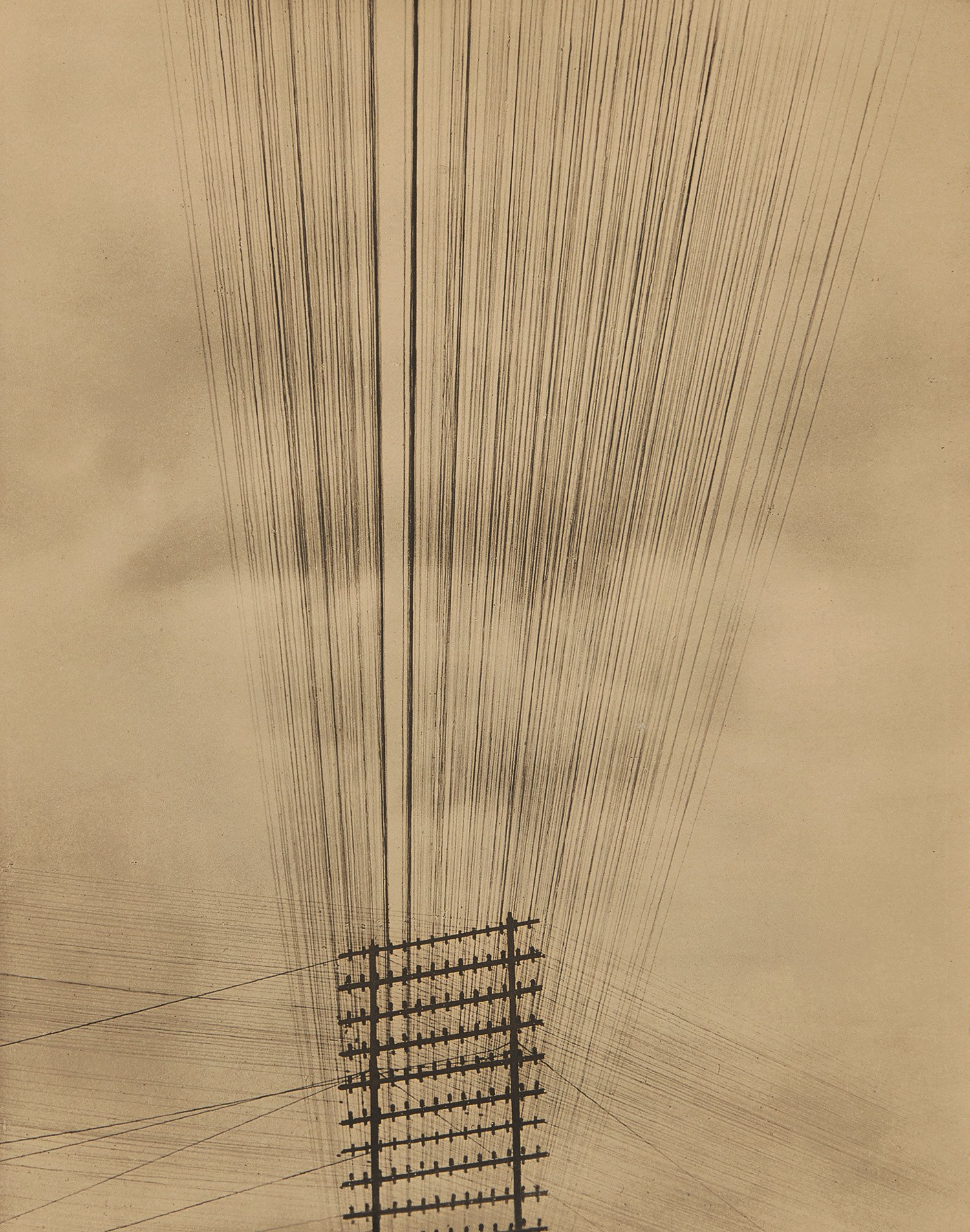

8
Tina Modotti
Telephone Wires, Mexico
- Estimate
- $250,000 - 350,000
$692,000
Lot Details
Palladium print.
1925
9 1/2 x 7 1/2 in. (24.1 x 19.1 cm)
Signed and dated in pencil on the mount.
Specialist
Full-Cataloguing
Catalogue Essay
In 1923, the Italian-born film actress and budding photographer Tina Modotti moved to Mexico City with her lover Edward Weston, and their time there was transformative for them both. In three crucial years in Mexico, Weston was introduced to a wholly new visual world that he would absorb and use in his work going forward. Modotti, who had lived in the city once before and already moved in the city’s artistic and political circles, was influenced by Mexico in a different way. While Weston had far more photographic experience, Modotti was a quick study and was soon creating images which were distinct in both content and aesthetic from her mentor’s.
Modotti’s Telephone Wires, made in 1925, exemplifies how independent an artist Modotti had become during her time with Weston in Mexico. With its bold repetition of diagonal and crisscrossing lines, Telephone Wires has more in common with the Constructivist explorations of Alexander Rodchenko or László Moholy-Nagy’s New Vision than with Edward Weston’s brand of American Modernism. Modotti’s composition is infused with the energy coursing through its wires, and is as dynamic a symbol of the modern age as any she would create.
Modotti made two studies of telephone or telegraph wires, and both were celebrated by the Estridentistas, a collective devoted to modernizing Mexico culturally. Modotti’s images of wires were perfect metaphors for the modernization and communication that the movement espoused. The Estridentistas’ goals were first articulated in the November 1926 issue of the journal Horizonte, which illustrated Modotti’s work alongside revolutionary Mexican artists such as José Clemente Orozco, Gabriel Fernández, and Diego Rivera, the original owner of this photograph. Modotti’s inclusion in this company was a sign of her acceptance within the visually and politically radical Mexican avant-garde.
As of this writing, early prints of this image have been located in two institutional collections: The Museum of Modern, New York, and the Baltimore Museum of Art.
Modotti’s Telephone Wires, made in 1925, exemplifies how independent an artist Modotti had become during her time with Weston in Mexico. With its bold repetition of diagonal and crisscrossing lines, Telephone Wires has more in common with the Constructivist explorations of Alexander Rodchenko or László Moholy-Nagy’s New Vision than with Edward Weston’s brand of American Modernism. Modotti’s composition is infused with the energy coursing through its wires, and is as dynamic a symbol of the modern age as any she would create.
Modotti made two studies of telephone or telegraph wires, and both were celebrated by the Estridentistas, a collective devoted to modernizing Mexico culturally. Modotti’s images of wires were perfect metaphors for the modernization and communication that the movement espoused. The Estridentistas’ goals were first articulated in the November 1926 issue of the journal Horizonte, which illustrated Modotti’s work alongside revolutionary Mexican artists such as José Clemente Orozco, Gabriel Fernández, and Diego Rivera, the original owner of this photograph. Modotti’s inclusion in this company was a sign of her acceptance within the visually and politically radical Mexican avant-garde.
As of this writing, early prints of this image have been located in two institutional collections: The Museum of Modern, New York, and the Baltimore Museum of Art.
Provenance
Exhibited
Literature